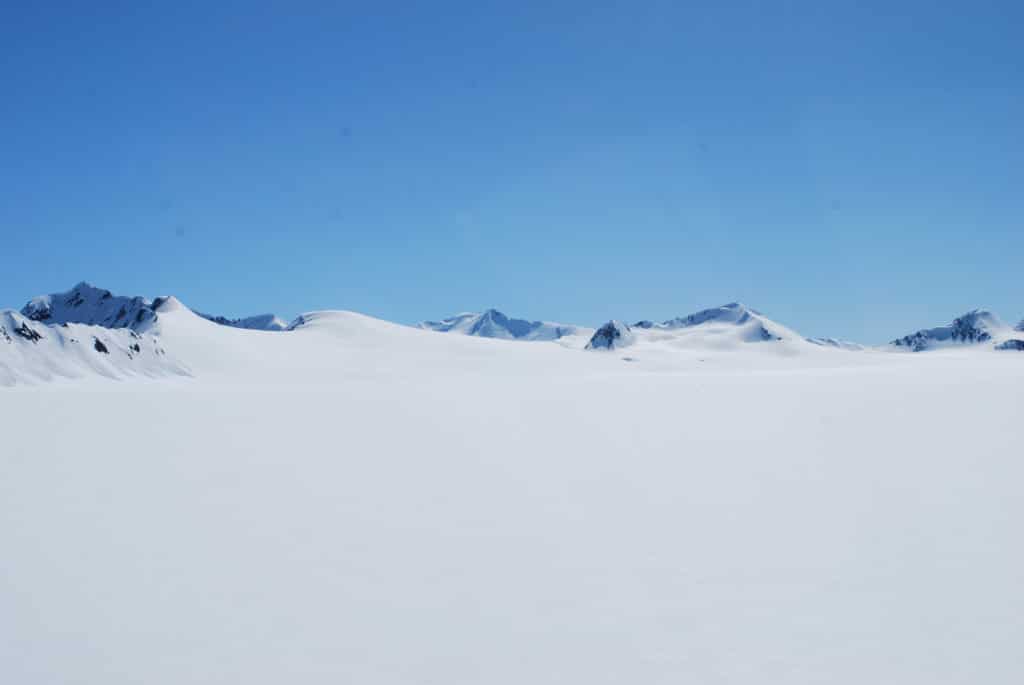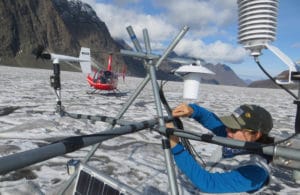
Jason Geck, associate professor of environmental science, is the lead author on the paper. That’s no surprise to his students, though, as Eklutna Glacier is an active subject in several of his classes.
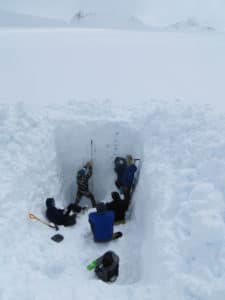
And that’s just his coursework. Geck also works with graduate students to create a photographic quilt of the glacier each year. Flying a fixed-wing-mounted camera, APU students create a mosaic of photos and determine the ice elevation at every pixel.
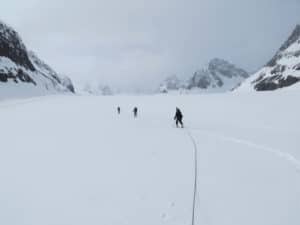
While that sounds alarming, it could be worse. In its final decades, a glacier will produce less and less water since there’s less ice to melt. That’s not happening to Eklutna. “We haven’t reached peak water,” said Geck. “That’s the big takeaway.”
The implications of Eklutna research affect everyone in Anchorage. The municipality relies on the glacier for roughly 80 percent of its drinking water. Eklutna Lake provides 10 to 15 percent of the city’s power. And now, several decades after the federal government handed the dam to local utilities, there’s a growing push and legal requirement to investigate diverting water into the traditional Eklutna River channel to restore salmon spawning grounds.
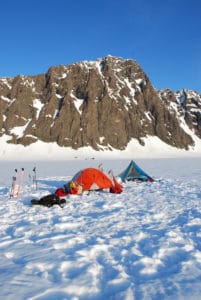
Fall 2021
SC 363 / ES 663: Introduction to Remote Sensing
SC 250: Survey and Methods in Environmental Science
SC 360 / ES 660: Intro to GIS (Geographic Infortmation Systems)
Summer 2022
SC 215: Glaciology and Glacier Travel
The full article is open-access and available online.
